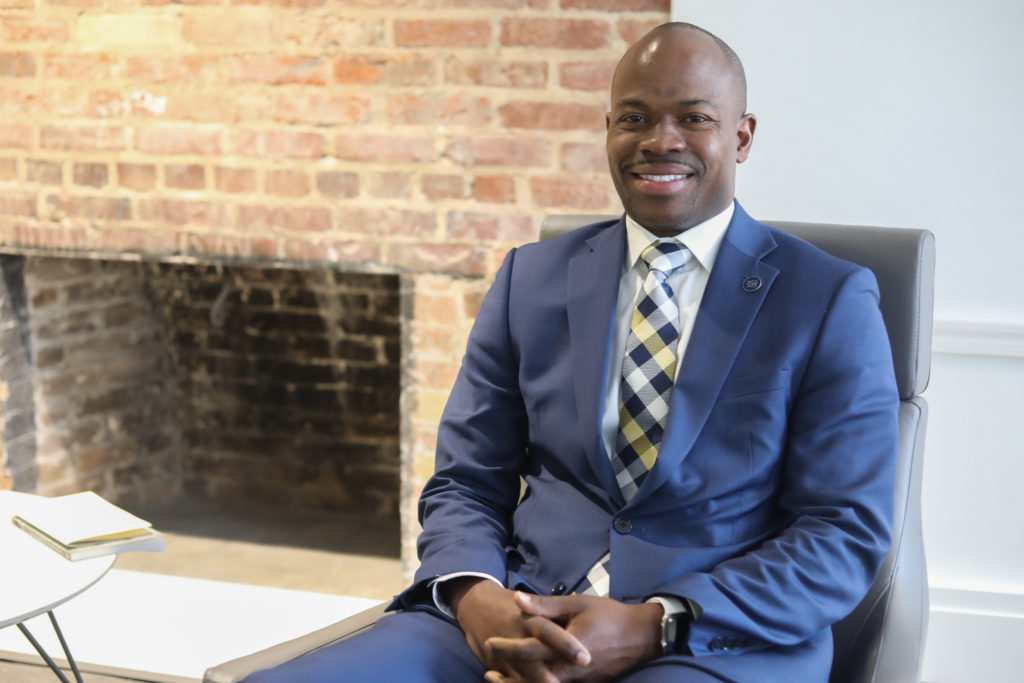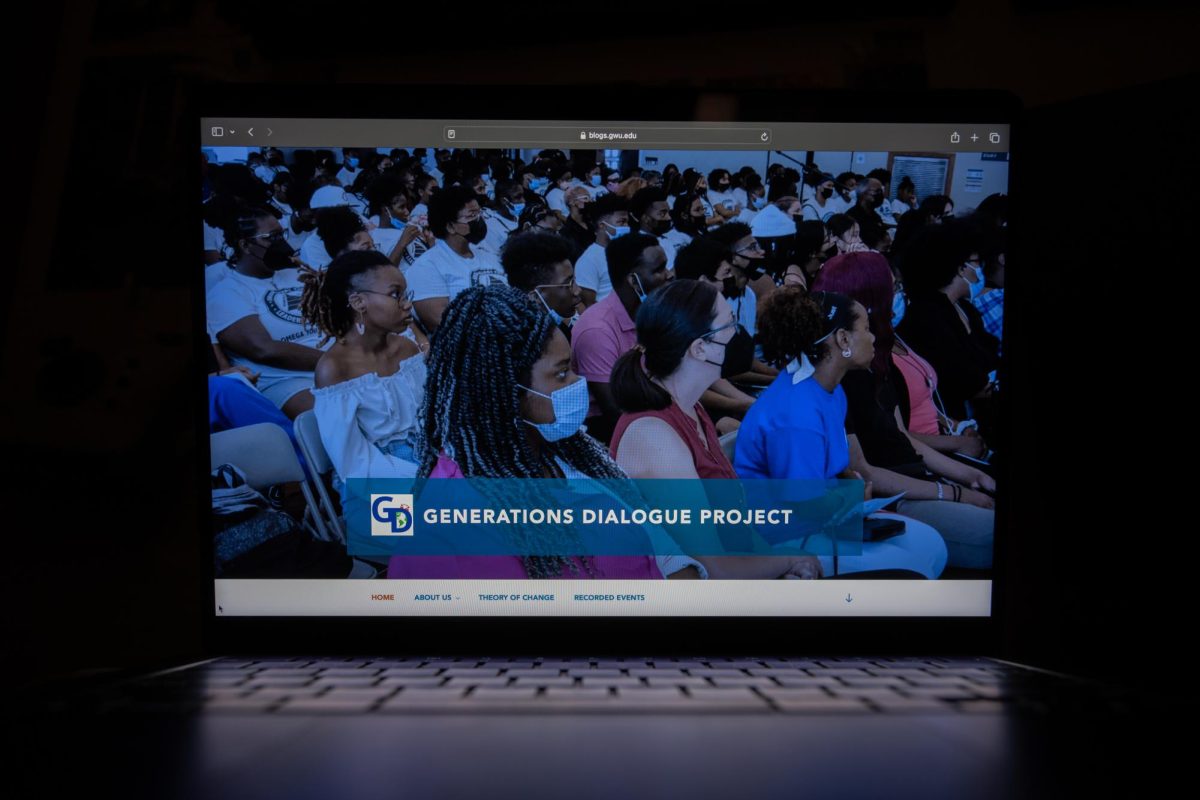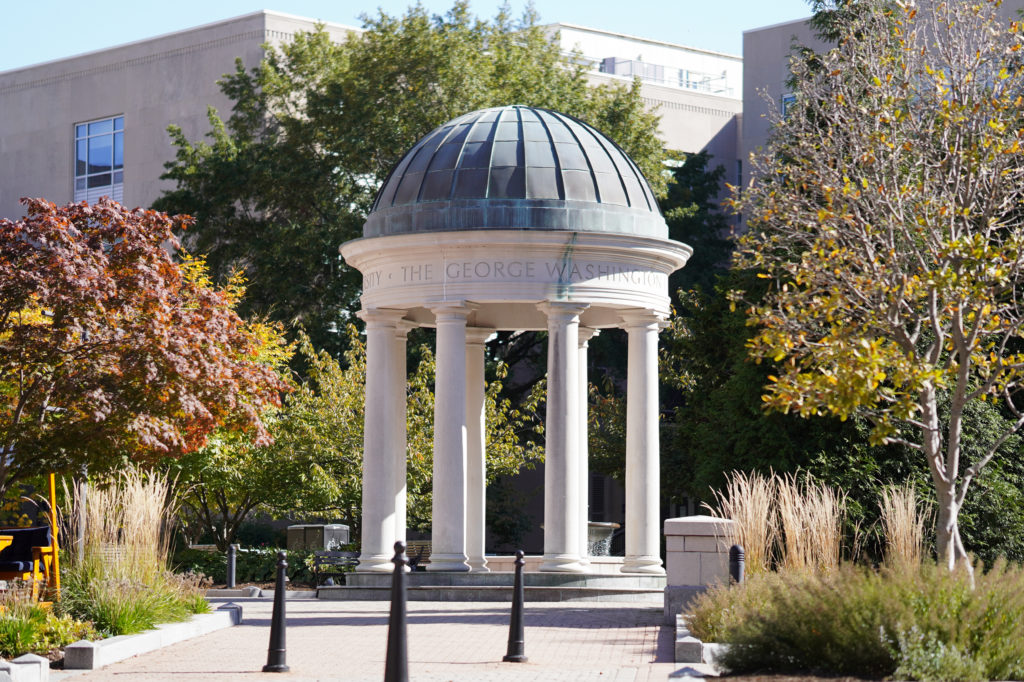About one in five undergraduates are now majoring in at least one STEM field, placing GW on track to meet its goal of 30 percent STEM enrollment in five years, Provost Brian Blake said.
Blake told professors at a Faculty Senate meeting Friday that GW’s “core indicators of academic excellence” demonstrate healthy academic progress for faculty and students. He said four- and six-year graduation rates and student retention rates have remained strong as the University has attracted a greater share of students with higher high school GPAs.
“This has been great work by my predecessor and also by the faculty and administrators who continue to come and really concentrate on retention rates,” he said.
Student metrics
Blake said the ratio of STEM majors has almost doubled in the last 10 years, adding that officials must convert about 120 non-STEM students to STEM ones each year to meet the goals of the 20/30 Plan. He said this effort will be aided by a natural uptick in the number of STEM majors as student preferences change over time.
“We’ve made a lot of gains in that area without doing anything really,” Blake said. “I think we’ve done things but without the impetus. I think some of that’s just how the discipline’s moving.”
The four-year graduation rate dropped slightly from its record high of 79 percent last year to 76.8 percent, bucking a three-year trend, while the six-year graduation rate is projected to rise to its highest level since at least 1997 at 84.4 percent, according to Blake’s presentation. He said he expects recent progress in improving graduation rates to continue in the future.
The student retention rate stayed about the same, dropping about 1 percentage point from about 93 to 92 percent from 2017 to 2018, the presentation states. Blake said he expects the retention rates to stay roughly the same in the range of 91 to 93 percent, as it has in five of the last six years.
Almost 30 percent of enrolled students logged a high school GPA of 3.89 or higher in the 2019 term, a two percentage point increase from 2018, according to the presentation. About 50 percent of the student body had a high school GPA of 3.74 or higher, up from 47 percent in 2018 and 33 percent in 2014, the presentation states.
“This is just simply, from a provost perspective, very gratifying in that GW’s been able to continue to bring in students that are even more academically prepared than the year previous,” Blake said.
Almost 27,000 first-year students applied to GW in 2019, the second-highest number of applications since 2010, while about 80 fewer students were accepted compared to 2018, according to the presentation. About 2,600 first-year students enrolled at GW in 2019, a more than 7 percent decrease compared to 2,845 students last year, the presentation shows.
The presentation states that the percentage of students graduating with two majors declined from 16.1 to 14.1 from the 2017-18 academic year to 2018-19, but Blake said there was a “significant” increase in the number of students with majors and minors in more than one school. He said students majoring in international affairs, economics and political science most commonly pursue interdisciplinary majors or minors.
The number of full-time equivalent students on the Foggy Bottom Campus inched closer to the allowed maximum capacity at 98.92 percent, the presentation states.
Faculty metrics
The percentage of women faculty out of total regular, research and specialized service professors reached its highest point in at least 10 years, at 47 percent, according to the presentation.
“It shows how much progress we’ve made over the years with regards to gender diversity within our faculty body,” Blake said.
The number of Asian faculty rose for at least the ninth year in a row to almost 16 percent of the total population, according to the presentation. But Blake added that GW has not made as much progress with increasing the number of underrepresented minorities, which has ticked up 1.5 percentage points in the last 10 years.
Blake said he and LeBlanc will look into why hiring remains flat for URM faculty and where specifically URM faculty tend to be the least represented. He added that one way to increase the number of URM faculty is to ensure the campus climate is welcoming and “inclusive” through a focus on recruitment, mentorship and retention.
“I don’t think there’s a silver bullet but if you can make progress in all three of those areas along the way, then you see these numbers climb,” he said.
The total number of regular faculty more than doubled in the School of Nursing and increased by more than 50 percent in the Milken Institute School of Public Health since 2010, while the number of faculty in the GW School of Business decreased by more than 20 percent in the same time span, according to the presentation.
Blake said the average salaries for full, associate and assistant professors improved compared to last year but highlighted salaries for associate and assistant professors in the Columbian College of Arts and Sciences and salaries for full and assistant professors in the Graduate School of Education and Human Development as areas for improvement, where faculty salaries tended to fall near or below the 60th percentile nationwide.
Average salaries for full and associate professors for the 2018-19 academic year were in the upper half of GW’s 12 market basket schools, while the average salary for assistant professors was the fourth-lowest among GW’s peers, according to the presentation.
Blake said the 2014 acquisition of the Corcoran School of the Arts and Design, whose faculty historically had lower salaries than GW faculty, brought down the average for assistant professor salaries at GW.
“I’m very sensitive about this particular slide because it’s the next generation of faculty that are coming in,” he said.
Female faculty on average earn at least 95 percent of what male faculty earn at full, associate and assistant professor positions in six of the nine schools listed in the presentation, which excluded the School of Medicine and Health Sciences.
The greatest gender earnings disparities were among full professors in the business school, where women earn on average about 15 percent more than their male counterparts, and among associate professors in the Elliott School of International Affairs, where women earn on average 83 percent of that of their male counterparts, the presentation states.
GW ranks second-lowest among its peers in full-time equivalent employees per 100 full-time equivalent student enrollment, according to the presentation.
“We do spend enough – it’s pretty interesting that the numbers don’t represent as well,” Blake said. “We really need to drill down to understand more why those trends are there.”
Lia DeGroot, Parth Kotak and Ilena Peng contributed reporting.










